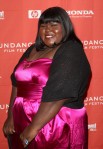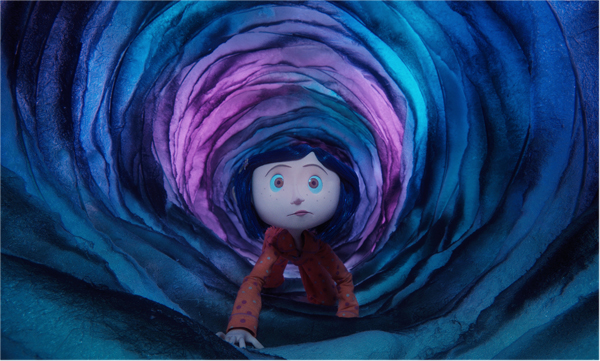My pretty girl
May 1, 2010
With all of the well wishes and God’s blessings and good luck and wood knocks in the world, in about three months, I will give birth to a baby girl. And I’m not the least bit scared.
Okay, that second sentence isn’t really true. I’m not scared of delivery and all the pain it brings. I’m practicing yoga, eating well and working with an experienced doula. I only experienced an evanescent moment of terror when the nurse at the OB/GYN asked me during my last visit if I have a living will and then expressed shock when I told her that I did. (Women still do die in childbirth.) I’m not afraid to “be” a mother. I’ll make mistakes along the way, but I’ll also do a lot of things right. I anticipate being able to keep my writing job, which I love, and transition it to home as much as possible; so I don’t think I’ll lose myself or my mind to a sea of diapers and drool and doo doo, oh my! My husband and I are joining a wonderful church full of wonderful people who will love our Ellie (Bean). We have a wealth of friends and family who will love her too. And certainly there is no shortage of love to be found in our home, with two dogs and the world’s most affectionate kitty at play.
So everything is fine and I am not afraid of having this baby emerge and become a real, autonomous person. It’ll be great!
There’s just one thing: body image. As a woman who has always run toward heavy, one who was told at a very young age that I’m predisposed to obesity and would have to work harder than most to stay trim, one who found herself in Weight Watchers by the time she was 11 years old, and one who was teased by some really mean-spirited girls in elementary and middle school for my chubby physique; I have founded fears that Ellie too may have to wrestle with the question, “Is my body good enough?”
Were she a boy, it wouldn’t be the issue that it inevitably will be. (I’m trying to be realistic about this.) Boys and men have a much wider spectrum of socially acceptable appearance than do women. Think about the movie stars who have achieved a-list celebrity status: sure, there are your Brad Pitts and your George Clooneys out there, but you’ve also go a lot of famous male movie stars that don’t possess six-pack abs and GQ style. Funny man Kevin James headlines movies like Paul Blart: Mall Cop at well over 200 lbs., yet he doesn’t face nearly the scrutiny and ridicule of similarly obese female Oscar-nominated actress Gabourey Sidibe (Precious).
I hate to single out either of these two people because I think they’re both lovable, but the fact of the matter is, Sidibe has been slammed from all angles about her weight. She’s gotten support from some who challenge the suggested norm of Hollywood actresses. Casting Director Rachel Tenner (not affiliated with Precious) told CNN, “Obviously, there aren’t a million parts made for her. Do I read 50 movies a year that are for her physicality? No. But, there are a lot of directors who appreciate the work that she did, and that may help her get considered for roles that are not written for her.”
But outspoken radio personality Howard Stern – who claims to like Sidibe’s work in Precious – condemned the actress to a limited film career saying, “What movie could she play in? You feel bad because everyone pretends that she’s part of show business, and she’s never going to be in another movie.”
Further compounding the double standard facing Sidibe – and women in general, Columnist Jeffrey Wells emailed, “Gabby is a lovely person and a fine actress, but the hard fact is that she’s way, way too fat…I don’t want Gabby to not work, but the only roles she’ll have a shot at playing will be down-market moms and hard-luck girls working at Wal-Mart. No casting director would choose her to play anyone in the upscale executive world…because no one in the executive world looks like her.”
I don’t buy that “no one in the executive world” looks like Sidibe, or James for that matter, because obesity is a trend in the United States right now. I’ve worked with plenty of overweight executives throughout my career (granted, the higher-ups are usually male and white so you’re perhaps more likely to see James in a board room than Sidibe). Regarding the size of Sidibe, there seem to be three angles at work: 1. is she healthy, 2. is she representative to a portion of humanity, obese or otherwise, and 3. is she pretty?
The road to the answer to the first question is full of pitfalls. Ask a hundred people and you’ll inevitably get a hundred answers about what constitutes healthy; and if you ask somebody with a disability, they’ll probably tell you you’re being ableist for using the word “healthy” to begin with. Some would argue that one’s healthy weight is completely unique to his or her build. Perhaps, Sidibe’s doctor would recommend a maximum weight of 150 lbs., but does that account for her bone density and any other special considerations such as thyroid or heart disease that might make it difficult for her to achieve such a goal? Some would say that being “too fat” is better than being “too skinny” in the long run because being overly thin can cause people to suffer anemia, broken bones or fatigue, etc. What do I think? I think the “perfect weight” for me is something my doctor agrees to: between 135 and 155 lbs. for my 5′ 5″, bone-dense frame. In other words, I think weight is personal. Would I love to weigh less than 135 lbs. and re-assume the size 2 clothes I wore in college when I ate about 500 calories per day and smoked like a chimney to stay lean? Sure! That’s what beauty is in our culture isn’t it: skinny and nothing else? But I love myself more than beauty these days so I’ll stick to “everything in moderation” and a size 8.
The answer to whether or not Sidibe is representative to a portion of the population and whether or not they and others can relate to her in movies and television is a resounding “yes.” There are plenty of overweight people in this world, enough to fill a couple of thousand theaters on opening weekend, just as they and others did for Precious (domestic box office gross: $47,566,524). Ultimately, it will probably be box office numbers and not weight analysis that keeps Sidibe in or out of roles.
Finally, the question of Sidibe’s level of pretty is perhaps entirely subjective. I remember having lunch with a friend who said that, while he admired her work in Precious, he was disgusted by her defenders who call her a pretty girl. “Because, let’s face it,” he said. “She’s not pretty.”
Hmmm. I actually think Sidibe is quite pretty. She has beautiful skin, hair and teeth. I was mesmerized by her in the movie because she was such a new thing to see on screen, like a Na’vi Avatar. Director Lee Daniels found Sidibe at an open casting call because she couldn’t be found affiliated with a casting agency: she isn’t the norm for Hollywood. But not normal doesn’t mean not pretty, does it? Is there an objective science to female beauty that can prove Sidibe is or isn’t pretty?
According to Discover magazine, and others, there is:
(Los Angeles Plastic Surgeon Dr. Stephen Marquardt) collected photographs of faces the world deemed beautiful and began measuring their dimensions. Whereupon something peculiar and thrilling presented itself: the golden ratio. Beautiful people’s mouths were 1.618 times wider than their noses, it seemed, their noses 1.618 times wider than the tip of their noses. As his data set expanded, Marquardt found indeed that the perfect face was lousy with golden ratios. Even the triangle formed by the nose and the mouth was a perfect acute golden triangle…Marquardt contends that the golden ratio can be detected in the iris, the colored part of the eye. Take 10 golden triangles, arrange them with their sharp points touching, and you have a golden decagon, fitting perfectly within the iris of the eye, vertices neatly touching the rim.
So, you see folks, you’re only as beautiful as your mouth to nose to eyes ratio.
That may be the way Pythagoras saw things and it may play a part in our subconscious urges to ogle and celebrate certain faces? The same thing goes for arm to hand to torso to leg to feet ratios and the “perfect body.” (I myself have a long torso and a short inseam, much to my dismay.) But I think that in America, our standard of beauty has to do with two things: economy and repetition. It’s more expensive and therefore elite to buy organic produce, diet aids, personal trainers and weight loss programs than it is to fill your kitchen cupboards with high fructose corn syrup-filled non-perishables and forget about the rest. And wouldn’t we all like to be members of the elite? Ergo, wouldn’t we rather buy fashion magazines with Keira Knightly on the cover than Gabby Sidibe, the former representing who we want to be and the latter perhaps who we are? And that brings me to repetition: we consume images of slender women on television, in movies and on the newsstand like we do peanuts at a baseball game – one sweaty fistful at a time in rapid succession. With so many images bombarding women with how we’re supposed to look – oh so many more than those that bombard men, it’s no wonder we’re weight-obsessed and full of self-loathing, regardless of our unique states of “health.” Why, just the other day, I was driving to work when I found myself stuck behind a New Jersey Transit bus wearing a vodka print ad with a bikini-clad female torso – just the torso, no face. Clearly this ad is aimed at heterosexual male consumers rather than my kind; I read it and did not think to myself, “Gee, I’ll get abs like those if I drink that brand of vodka.”
If I can’t escape the world of female body shaming even in the privacy of my own car with the windows rolled up and the Back Street Boys blaring on the radio just mildly drowning out my singing along – and I’m a confident 30 year-old mother-to-be, than what is in store for Ellie? However she comes out, she’ll be beautiful to her parents, even if others squeamishly nod at her in approval and then lament her less-than-attractive looks behind our backs. I thought I’d found a solution to this fear that I’ll raise a daughter who’ll hate her body when I came across an article in The New York Times Magazine on April 18, 2010: “The Fat Trap.” It asks the question: Can a mother simultaneously encourage her daughter to watch what she eats and to accept her body?
Oh joy! Somebody did all of the legwork for me! Well, not the case: this article provides no answers to this query except to say that conversations about food and fat and body image cannot be entirely avoided. What?! That’s all we well-intentioned mothers-of-daughters-to-be get for reading this essay! For shame!
But the truth of the matter is that there probably is no answer to this question – or rather the answer is sometimes yes and sometimes no; not just because every mother-daughter relationship is unique, but because self-esteem is something that’s fluid: it comes and goes with the tide. I love my body until I read a report that Jennifer Aniston just lost 7 lbs. in 7 days…and then I feel guilty for that 2 oz. bag of trail mix I just scarfed. And if I tell Ellie she’s pretty, she will probably love her body until Suri Cruise turns out to be anorexic or has cosmetic surgery to fix her flaws, or a mean little girl on the playground makes fun of Ellie’s nose to mouth ratio (only she probably won’t be that scientific, read: nice, about it).
Turn to page 22 of that same magazine and you’ll find “The Anatomy of Desire,” which asks the question: What is a man’s ideal female form? A study of the blind tries to find out. What the fuck?! This is the “health” issue, right…not the drive women to anxiety, depression and eventual suicide issue? So now women not only have to worry about what seeing men think of our bodies, we have to worry about what blind men think too? That’s preposterous…yet it proves my point: women and our bodies are at war with the standards of beauty – many of them rooted is misogyny – that our society upholds to be perfection, and nothing less will do.
Okay, I’ll definitely be revisiting this topic in the future. I have years before I’ll have to worry about having the talk with Ellie about health and beauty. In the meantime, we’ll just refer to my Weight Watchers meeting as “the meeting” I attend with Aunt A** and Aunt N*****. And fruits and vegetables will be just as fun to eat as candy because they can come with a dollop of peanut butter on the side. And we’ll dance our afternoons away to groovy Sesame Street tunes on CD. And, unless the next Hannah Montana has an eating disorder, Ellie probably won’t notice the difference between her looks and Montana’s. And we’ll tell her every day how beautiful she is and how much we love her.
I’ll try to be brave.












8 comments